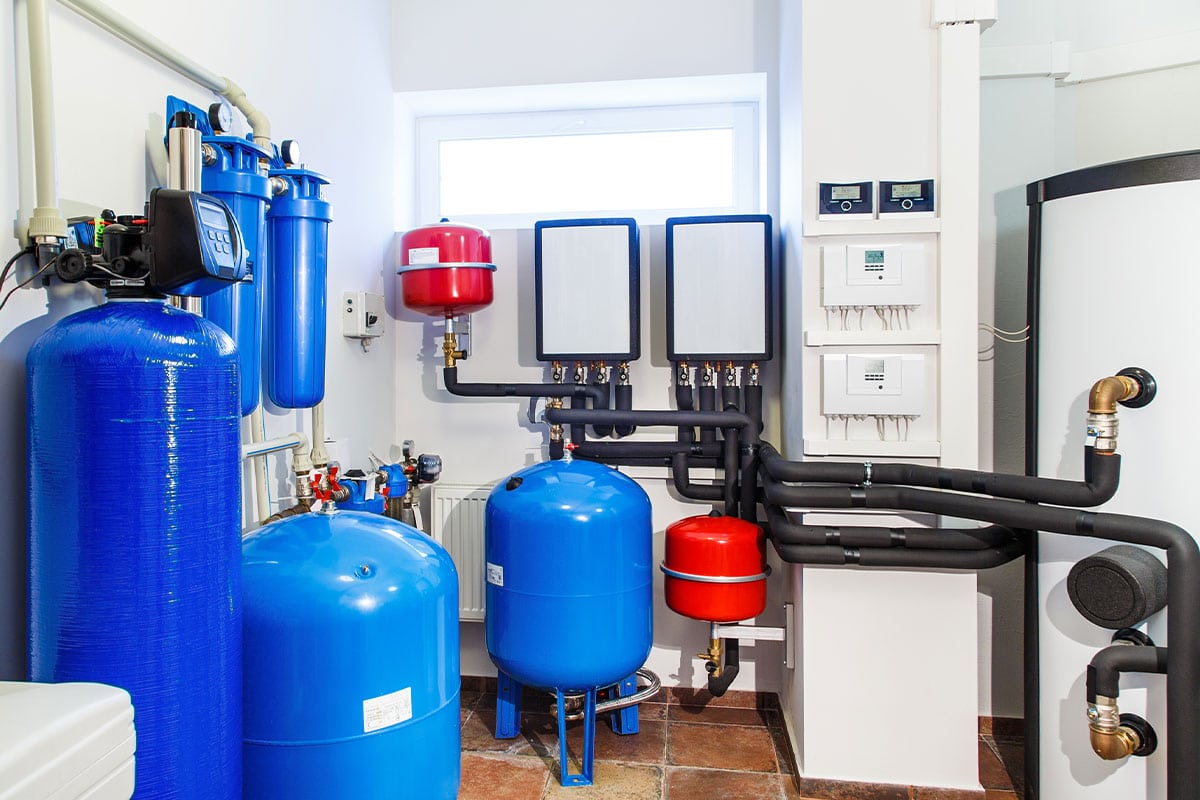Water softeners are an essential element of many home water installations, especially in areas with high levels of water hardness. One of the key aspects of the operation of these devices is the proper disposal of washings into the sewage system. But can this be done through a drain above the water softener?
The answer is yes, you can! During the regeneration of the water softener, the washings are thrown out under the pressure existing in the water system. Pressure drops may occur, but if the discharge pipe is raised to a height of 1.5 - 3 meters, there should be no problem with this operation. However, it is important that the pressure at the entrance of the installation is higher than 3 bar.
Tips for discharging washings from a water softener
If you decide to raise the washings discharge pipe above the water softener, it is worth paying attention to several important issues. First, make sure the drain pipe is securely attached to avoid leaks or vibrations while the softener is being regenerated.
Secondly, check the condition of the pipe and its seals regularly. If any problems are detected, such as leaks or damage, they will need to be repaired immediately. It is also a good idea to ensure proper pipe insulation to minimize the risk of water condensation, which may lead to corrosion or moisture in the surroundings.
Installation of a water softener with proper drainage of washings
Remember that proper installation of the water softener is crucial for its effective operation and long life. If you are not sure how to carry out the installation by raising the washings discharge pipe, it is worth using the services of a specialist. A professional will advise you on how to properly install the device and ensure trouble-free discharge of washings into the sewage system.
To sum up, it is possible to drain the washings from the water softener to the drain located above the device. However, it is worth paying attention to several key aspects:
such as appropriate pressure in the installation, solid mounting of the discharge pipe and regular inspection of its condition. Following these instructions will allow for effective and long-lasting operation of the water softener and proper disposal of washings into the sewage system.
Safety and appropriate standards in water softener installation
When installing a water softener with a raised rinsing drain, you should also pay attention to compliance with relevant safety standards and regulations. Some local codes may provide guidelines on how to install and discharge water softener backwash. Make sure your installation meets these requirements to avoid potential legal problems or the need for costly modifications.
It is also recommended to consult a water softener and plumbing expert who will help you plan and properly install the device. This way you will be able to avoid unexpected problems and ensure that your installation complies with applicable regulations.
The benefits of properly installing a water softener
Properly installing a water softener with a raised rinsing drain brings many benefits, both in terms of the efficiency of the device and its durability. Proper removal of rinsing water ensures that the water softener works optimally, protecting installations against scale build-up and increasing the efficiency of other devices, such as washing machines and dishwashers.
Additionally, ensuring proper drainage of washings and regularly checking the condition of the discharge pipe contributes to extending the life of the water softener. As a result, the investment in a good quality device and appropriate installation will pay off in the form of lower operating costs and longer operation of the device.
Therefore, it is worth investing time and resources in properly installing a water softener with a raised rinsing drain. Thanks to this, you will be able to enjoy soft water, as well as achieve energy savings and extend the life of your home appliances.
Summary and recommendations for installing a water softener with raised washings drainage
Installing a water softener with a raised rinsing discharge is possible provided that appropriate conditions are met, such as adequate pressure in the installation and the pipe elevation height not exceeding 1.5 - 3 meters. However, it is worth remembering that such a solution requires additional attention and care on the part of the owner, especially in the context of maintaining and inspecting the discharge pipe.
If you are planning to install a water softener with a raised rinsing drain, we recommend consulting with an experienced specialist and checking the applicable regulations in your area. Correctly installing the device and maintaining it will allow you to achieve benefits such as better water quality, energy savings and a longer life of other home appliances.



